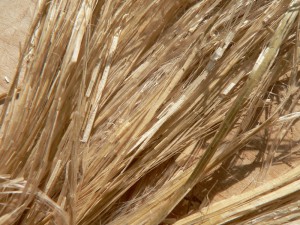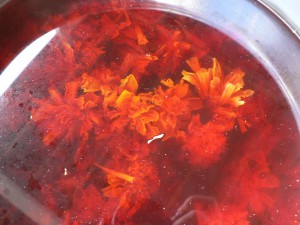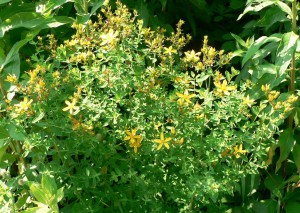Why two blog posts in one night, you may wonder? I am typically a binge-blogger. Once I finally sit down to deal with photos and organization and writing, I get in a groove and it’s fun to keep going. Tonight, however, I am killing time while I wait up for a tansy dye bath and a wool mordanting bath to get done. Tomorrow I am doing a natural dye workshop for Mass Ag. in the Classroom at their day of hands-on gardening skills. I have been absurdly busy with one thing and another all week, so tonight was my sole free night to wind skeins, scour, mordant, and make the dyebath. It’s more than I usually try to do in a night after work, and makes for a later night than usual. Anyway. I am not actually writing about that. I am writing about my gorgeous Japanese Indigo plants.
After a few frost warnings this month, during which I covered the Japanese Indigo with several layers of sheets, the forecasted temperatures on October 19th were in the 20s. I figured the time had come to cut all the Japanese Indigo and hang it up to dry. You may recall that I had decided to let the plants get as big as possible, and to try to save as much seed as possible, rather than harvest the leaves for dyeing this season. I had brushed off seeds as the flowers stalks matured and dried out, so I already had a pretty nice stash of seeds. But, I read in Dorothy Miller’s seminal book Indigo From Seed to Dye that you can cut the whole plants and allow them to dry, and the seeds will continue to mature. Since I know this is true of flax and some other plants, I was pretty confident that it would work. Continue reading “Japanese Indigo Harvest”




